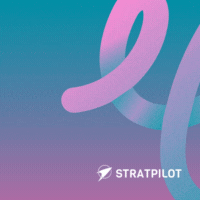As 2026 approaches, customer loyalty is becoming an even greater priority for small and medium-sized enterprises (SMEs). With customer expectations rising and competition increasing across both digital and physical markets, loyalty programs now need to be smarter, more personalised, and more data-driven than ever before. Many businesses are turning to AI prompts for customer loyalty to streamline strategy, define goals, and create loyalty experiences that keep customers engaged long-term.
AI prompts can help SMEs shape clearer loyalty plans, set measurable targets, and build customer retention strategies that evolve with market trends. Instead of navigating loyalty decisions manually, businesses can rely on AI to support prioritisation, segmentation, and communication planning, making it significantly easier for teams to stay aligned.
Below are ten of the most impactful AI prompts you can use when building or improving your loyalty program in 2026.
Top 10 AI Prompts for Customer Loyalty Programmes
1. Define Your Loyalty Program Objective
Prompt Template: “Create a clear loyalty program objective based on our business goals, customer base, and product usage trends.”
Example Output: “The objective is to increase repeat purchases by 20% in the next 12 months by rewarding customers for consistent engagement and offering exclusive member benefits.”
Why This Is Useful: It ensures your team builds a loyalty program aligned with specific outcomes instead of adopting vague or generic goals.
2. Identify Customer Segments for Rewards
Prompt Template: “Recommend the best customer segments for targeted rewards based on recent purchase behavior and engagement data.”
Example Output: “Segment customers into high-frequency buyers, new customers, inactive members, and seasonal buyers.”
Why This Is Useful: Segmentation helps your loyalty scheme deliver relevant rewards instead of pushing the same incentives to every customer.
3. Suggest Reward Types That Match Customer Motivation
Prompt Template: “Based on our product catalogue and customer persona data, suggest reward types that encourage repeat purchases.”
Example Output: “Offer early access to new products, referral rewards, limited-time discounts, and milestone bonuses.”
Why This Is Useful: Choosing the right rewards strengthens the emotional and functional value of your loyalty program.
4. Plan Member Onboarding and Activation
Prompt Template: “Generate an onboarding journey for new members joining our loyalty program.”
Example Output: “Step 1: Welcome email. Step 2: Introduce earning rules. Step 3: Offer a first-purchase bonus. Step 4: Share tips on maximising rewards.”
Why This Is Useful: A structured onboarding sequence helps customers quickly understand the value of joining.
5. Create Personalised Reward Messaging
Prompt Template: “Generate personalised reward messages for customers who have not redeemed points in 90 days.”
Example Output: “You’ve earned rewards waiting to be used. Here’s a reminder to redeem your points before they expire, treat yourself to something special.”
Why This Is Useful: It encourages engagement and prevents customers from drifting away due to inactivity.
6. Predict Customer Churn
Prompt Template: “Based on engagement patterns, identify customers at risk of churn and propose loyalty-based interventions.”
Example Output: “Customers with no purchases in 120 days should receive a reactivation bonus or exclusive discount.”
Why This Is Useful: Helps your team use loyalty tactics as proactive retention tools.
7. Build a Yearly Loyalty Campaign Calendar
Prompt Template: “Create a 12-month loyalty campaign calendar for seasonal events and peak buying periods.”
Example Output: “January: New Year points boost; April: Spring reward challenge; October: early holiday access.”
Why This Is Useful: A structured calendar helps your team stay consistent, relevant, and planned.
8. Optimise Point-Earning Rules
Prompt Template: “Evaluate our current earning rules and propose improvements to increase engagement without reducing margin.”
Example Output: “Introduce tiered earning levels and bonus points for completing actions like referrals or reviews.”
Why This Is Useful: It ensures your earning structure motivates behavior while remaining financially sustainable.
9. Create Post-Purchase Feedback Prompts
Prompt Template: “Generate a post-purchase message encouraging customers to leave feedback and earn loyalty points.”
Example Output: “Share your thoughts and earn 50 points. Your feedback helps us improve.”
Why This Is Useful: Feedback loops strengthen customer relationships and enrich your data.
10. Evaluate Loyalty Program Success
Prompt Template: “List key metrics to evaluate our loyalty program’s success and how to visualise them.”
Example Output: “Track repeat purchase rate, redemption rate, customer lifetime value, and tier progression.”
Why This Is Useful: Clear measurement ensures your team can refine the loyalty strategy effectively over time, especially as you rely more on AI prompts for customer loyalty across your team.
How Stratpilot Can Support Your Loyalty Initiatives
Stratpilot helps SMEs structure and improve their customer loyalty strategies by providing guided prompt templates, collaborative workspaces, and AI-supported planning features. It allows teams to turn loyalty concepts into clear, actionable strategies without relying on disconnected documents or manual workflows. While Stratpilot does not track customer-level data, it supports your team in shaping objectives, planning campaigns, and maintaining a unified approach to customer loyalty development.
Start Strengthening Customer Loyalty Today
If you’re ready to build clearer strategies, streamline your customer loyalty planning, and help your team stay aligned, request a demo for Stratpilot today. It offers a structured environment designed to support SMEs as they adopt smarter, AI-assisted planning practices.
Frequently Asked Questions (FAQs)
1. Are AI prompts suitable for SMEs with small loyalty programs?
Yes. These prompts work for businesses of all sizes and help SMEs plan more effectively without needing large teams.
2. Can AI prompts replace customer insight teams?
No. They support strategy building, but customer experience insight remains essential for accuracy and a human perspective.
3. How do these prompts support team goal setting?
They help teams define measurable targets, structure campaigns, and align actions across marketing, sales, and customer support.
4. Can these prompts be adapted for industries outside retail?
Absolutely. Service businesses, subscription platforms, and B2B companies can all benefit from loyalty-based AI planning.
5. How does Stratpilot support loyalty planning?
Stratpilot provides a workspace, built-in prompt templates, and structured planning features that help SMEs create clear loyalty strategies without relying on manual systems.





